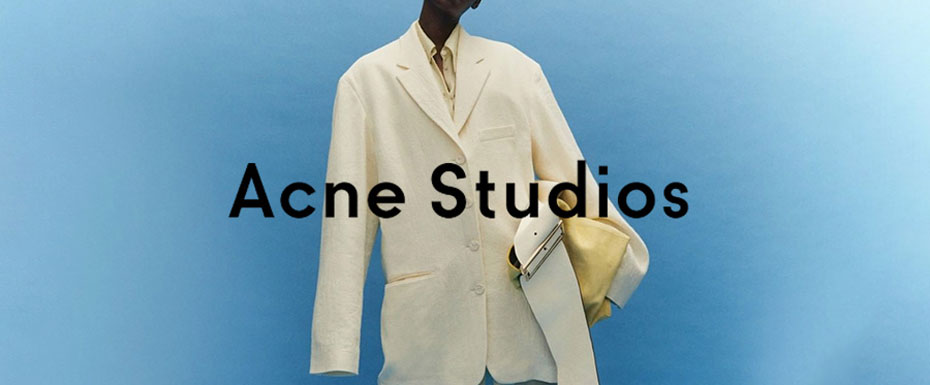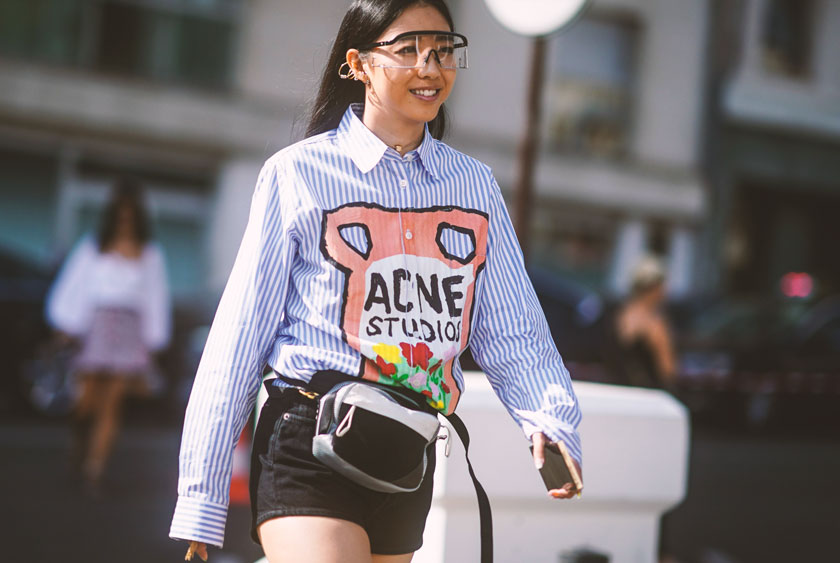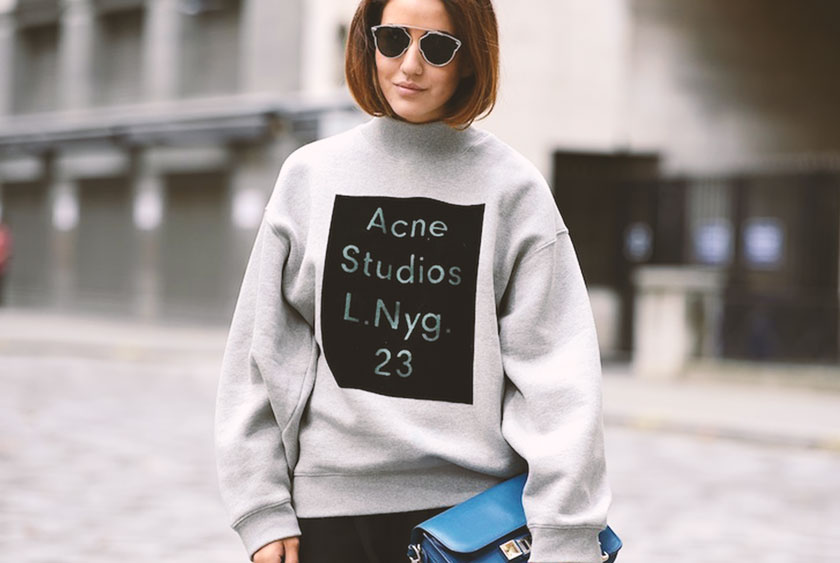
Scandinavian style has long captured our lives, from interior design to everyday clothing. One of Scandinavian pioneering brands is Acne Studios, which has been paving the way for new brands in the fashion industry since the late 90s. Beginning with the production of signature jeans, the company quickly gained world-famous status, later making the iconic shade of millennial pink. Through an interest in photography, art, architecture, and contemporary culture, the Stockholm-based brand has found its growth path, focusing on apparel and furniture, music, magazines, and films.
Let’s take a closer look at the history of Acne Studios.
Creation of ACNE
It’s impossible to talk about the history of Acne Studios without talking about its founder Jonny Johansson. Until the age of 19, Johansson lived in Umeå, the future creative director who was brought up in a creative environment from a young age: his mother was an artist, and his father was a military man by profession, but he constantly played the guitar. Johnny himself also had a penchant for music and spent his teenage years playing in post-punk bands and even considering turning it into his life’s work.
 Johansson’s father was always a great source of inspiration for him because he dressed in a way that followed his own style. This even made Jonny feel uncomfortable as his father always stood out from the crowd. Later, Johnny realized that there is no “right way to dress” – everyone has to interpret clothes in their own way. So he preferred to consider fashion not as a “celebrity circus” but as a creative expression.
Johansson’s father was always a great source of inspiration for him because he dressed in a way that followed his own style. This even made Jonny feel uncomfortable as his father always stood out from the crowd. Later, Johnny realized that there is no “right way to dress” – everyone has to interpret clothes in their own way. So he preferred to consider fashion not as a “celebrity circus” but as a creative expression.
In 1996, this desire to express himself resulted in creating the company ACNE, which he worked on with his friends, three other entrepreneurs. Initially, with a budget of just 10,000 €, the project was conceived as a creative team that worked on graphics, film, design, and advertising. Johnny Johansson was responsible for the functioning of the fashion house, which was based in Stockholm.

ACNE was an acronym for “Associated Computer Nerd Enterprises,” but later became deciphered as “Ambition to Create Novel Expressions.”
In 1997, the designer had the idea to create 100 pairs of raw denim jeans and embellish them with red stitching. The entire edition was snapped up by the family and relatives of the ACNE founders. Nevertheless, the jeans caught the attention of the press, helping the brand’s growth. Soon the ” weird jeans,” as they were called, were splashed across the pages of glossy magazines like Vogue, Wallpaper Magazine, and Elle. This collection became the basis for the future empire, attracting progressive young people who do not want to stand out from the crowd with flashy images but appreciate fashion and style without any associations.
The release became very popular and in demand, prompting ACNE to create new clothes and go beyond just working with denim. However, as Johansson himself explained in an interview with Vogue, he did not plan to stop at just making jeans; he wanted the brand to be truly relevant, so he started with jeans. But it was always essential for Johansson to work at the intersection of styles.

History of Acne Studios
A few years later, the ACNE business suffered some hard times despite its rapid success. Mikael Schiller, then a master’s student at the Stockholm School of Economics, came to rescue a company on the verge of bankruptcy. In 2001, Schiller wrote an investment memorandum for ACNE, after which he was invited to become Managing Director. Together with Johansson, he restructured the production and sales process of the collections, putting the brand back on its feet. In the following years, Schiller became a key figure in the company’s evolution from a fledgling creative agency to the global fashion house that it is today.
In 2006, ACNE split into separate brands – Acne Film, Acne Digital, Acne Advertising, and Johansson-owned fashion house Acne Studios. Even after leaving the team, Johnny has maintained a multi-faceted approach to the brand organization. In addition to clothing, Acne Studios also produces books, films, magazines, and furniture. But despite the diversified focus of the project, most people know the company as a clothing brand. Each year Acne Studios releases two main collections of men’s and women’s wear and two women’s pre-collections.

In 2012 Acne collaborated with photographer Lord Snowdon and presented its first book called “Snowdon Blue.” At the same time, the brand opened its first flagship store in New York. Speaking of stores, each Acne Studios outlet is strikingly different from the others. It again demonstrates the diversity of Johansson’s interests, who likes to come up with new concepts for the stores, making them more like art galleries than regular outlets.
ACNE has gained the respect of the fashion industry with collections that are distinctive and provocative. The considerable variation between the ranges of different seasons is due to Johansson’s passion for contradictions, attention to detail, and the use of custom-made fabrics, which makes the range unique and unexpected. In addition, photography, art, architecture, and contemporary cultural influences permeate the brand’s products. At the same time, the comfort of the clothes is always an inherent feature of all Scandinavian brands, which focus on simplicity and functionality.
Two key features can characterize acne Studios. The first is its Scandinavian influence on fashion – Johansson describes the brand’s style as “maximalist minimalism.” Acne is considered the starting point of a general obsession with Scandinavian style, although the company itself has never been interested in Nordic hegemony and never imagined that it would be one of the leading brands. According to Johansson, the key to their success is the climate, because statistically, the brand is famous in places with bad weather like the United Kingdom.
 Acne Studios’ second signature is a beige-pink color, now globally known as “millennial pink.” The Stockholm-based brand made the shade famous by decorating its packaging with it – by the way, the brand’s paper bags are still popular among resellers on eBay.
Acne Studios’ second signature is a beige-pink color, now globally known as “millennial pink.” The Stockholm-based brand made the shade famous by decorating its packaging with it – by the way, the brand’s paper bags are still popular among resellers on eBay.
Today Acne’s trademark is not only jeans but also biker jackets, Pistol Boots, chinos, impeccably cut tailoring, and outerwear.
The creative director of Acne Studios is not interested in trends: instead, he prefers to design by acting spontaneously, which often baffles critics at the brand’s fashion shows.
You can always guess the founder’s new hobbies from the following Acne Studios assortment. In 2016, for example, Johansson released a line of military-inspired clothing because he served in the military. The designer introduced many pink and purple pieces in another season because this combination seemed “awkward” to him. Johansson was exclusively into surfing for several years, which was also reflected in his collections.

In the images of the men’s collection of Spring/Summer 2022, you could feel the influence of the French creative commune Marienia, which Johnny often visits. As for the new RTW collection, Johansson replaced the softness and coziness of home suits with sexy lingerie. This time there were references to medieval boudoirs and historical corsets on the runway. Studying Generation Z and the desire to bare their bodies, the designer was inspired by the youth’s thirst to express themselves through clothing.
Acne strives to approach the production of goods as responsibly as possible. Since 2008, the company has been a member of the Fair Wear Foundation, which helps to monitor and improve working conditions in the factories that produce their goods.







